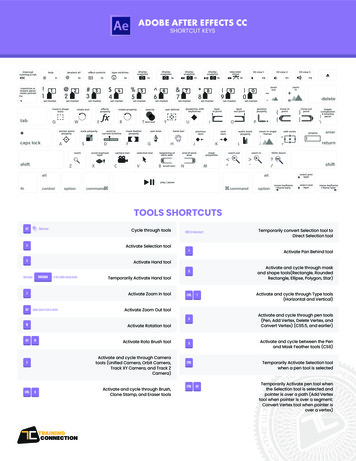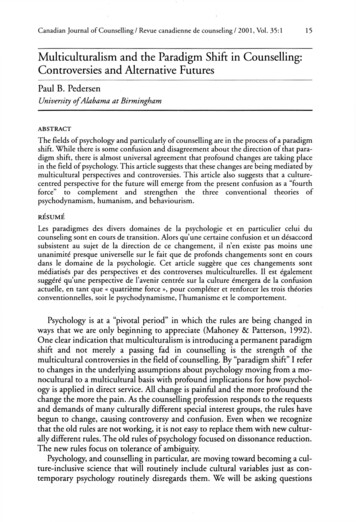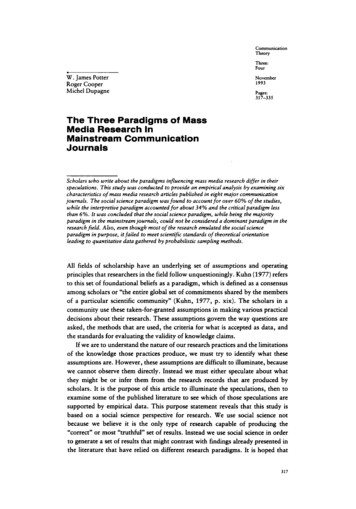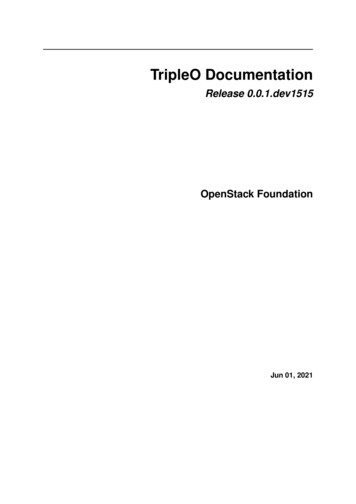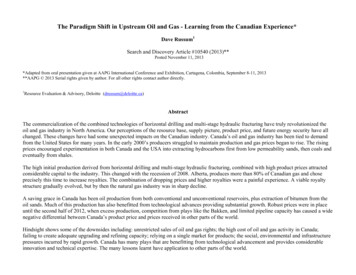
Transcription
The Paradigm Shift in Upstream Oil and Gas - Learning from the Canadian Experience*Dave Russum1Search and Discovery Article #10540 (2013)**Posted November 11, 2013*Adapted from oral presentation given at AAPG International Conference and Exhibition, Cartagena, Colombia, September 8-11, 2013**AAPG 2013 Serial rights given by author. For all other rights contact author directly.1Resource Evaluation & Advisory, Deloitte (drussum@deloitte.ca)AbstractThe commercialization of the combined technologies of horizontal drilling and multi-stage hydraulic fracturing have truly revolutionized theoil and gas industry in North America. Our perceptions of the resource base, supply picture, product price, and future energy security have allchanged. These changes have had some unexpected impacts on the Canadian industry. Canada’s oil and gas industry has been tied to demandfrom the United States for many years. In the early 2000’s producers struggled to maintain production and gas prices began to rise. The risingprices encouraged experimentation in both Canada and the USA into extracting hydrocarbons first from low permeability sands, then coals andeventually from shales.The high initial production derived from horizontal drilling and multi-stage hydraulic fracturing, combined with high product prices attractedconsiderable capital to the industry. This changed with the recession of 2008. Alberta, produces more than 80% of Canadian gas and choseprecisely this time to increase royalties. The combination of dropping prices and higher royalties were a painful experience. A viable royaltystructure gradually evolved, but by then the natural gas industry was in sharp decline.A saving grace in Canada has been oil production from both conventional and unconventional reservoirs, plus extraction of bitumen from theoil sands. Much of this production has also benefitted from technological advances providing substantial growth. Robust prices were in placeuntil the second half of 2012, when excess production, competition from plays like the Bakken, and limited pipeline capacity has caused a widenegative differential between Canada’s product price and prices received in other parts of the world.Hindsight shows some of the downsides including: unrestricted sales of oil and gas rights; the high cost of oil and gas activity in Canada;failing to create adequate upgrading and refining capacity; relying on a single market for products; the social, environmental and infrastructurepressures incurred by rapid growth. Canada has many plays that are benefitting from technological advancement and provides considerableinnovation and technical expertise. The many lessons learnt have application to other parts of the world.
Presenter’s notes: In case you are wondering why Deloitte is presenting at a geological conference - Deloitte acquired AJM Petroleum Consultants in2011, we provide consolidated M&A, financial plus technical evaluations and advisory services through Deloitte’s offices around the world.
Presenter’s notes: There are challenges that force companies to seek the best possible technical solutions.
Presenter’s notes: The resource triangle – with conventional opportunities at the top becoming less conventional and more challenging to extract asmove down the triangle.
Presenter’s notes: The remarkable turnaround in US gas production is from unconventional reservoirs utilizing the dual technologies of horizontaldrilling and multi-stage fracturing.
Presenter’s notes: While the US shale plays – Marcellus, Haynesville, Barnett, Eagle Ford are very familiar – plays in Canada are less well known.The next speaker will be talking about Eastern Canada so I will focus the rest of this presentation on Western Canada. The Horn River is perhaps thelargest shale play of all when extension to the west and north is considered while the Montney is a hybrid with many types of conventional andunconventional reservoirs.
Presenter’s notes: Unconventional plays can typically be divided into 3 types low k sands and carbonates, shales and coals. Western Canada hasmany examples that fall into all 3 categories but many of the most interesting opportunities fall on the left side of the triangle with variable coarseand fine grained rock components.
Presenter’s notes: Horizontal drilling has increased exponentially across western Canada in the past few years. Over 40,000 wells have been drilledto date with about half using multistage fracturing.
Presenter’s notes: Horizontal drilling has been used in virtually every play in western Canada.
Presenter’s notes: 2012 horizontal drilling 7,000 wells focus on oil plays and gas plays with high liquids content. Some of the most significant arehighlighted. I want to focus on the emerging Duverney play.
Presenter’s notes: Off reef and hydrocarbon source for productive Leduc reefs – has seen growing activity over the past 3 years Over 100 wells have been drilled or licensed to date, most information is still confidential but there are some encouraging reports
Presenter’s notes: Seen in X-sec organic shales are concentrated in the lower part of the basinal section.
Presenter’s notes: Initial screening focused on 2 criteria - thickness of organic shale and maturity.
Presenter’s notes: Important to recognise that thickness and source rock maturity are not only ways to identify sweet spots many other criteria canmake one area better than another.
Presenter’s notes: As a caution some area have a tight carbonate within the shale – both reduced the thickness of shale and resource but also makes itvery difficult to effectively drill and produce the resource.
Presenter’s notes: Many plays may never be economically - Some of the lessons we’ve learnt from pursuing unconventional plays in Canada.
Presenter’s notes: Geoscience needs to be involved in all steps of the evaluation process.
Canada's oil and gas industry has been tied to demand from the United States for many years. In the early 2000's producers struggled to maintain production and gas prices began to rise. The rising . The Paradigm Shift in Upstream Oil and Gas - Learning from the Canadian Experience, #10540 (2013)



